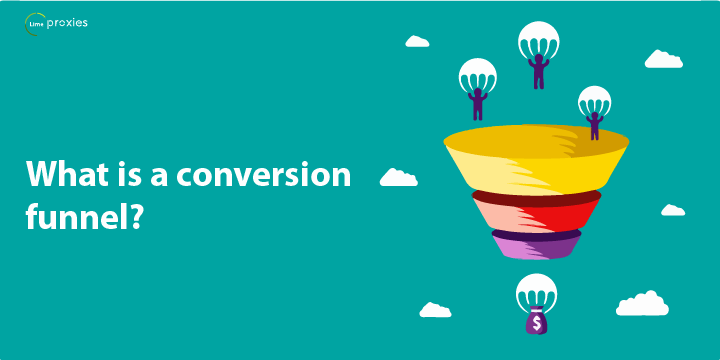
Do you want to exponentially increase your e-commerce sales? The very first thing that you need to know is that copying someone’s random strategy from around the globe will most probably won’t work for you. The second thing that you need to know is every site is different in some or other way. To exponentially increase your e-commerce sales you need to perform ecommerce data analysis.
In this exponentially growing digital world, which is already crowded with competitors, transforming visitors on your e-commerce website into loyal customers, kind of customers who are not just customers, but a kind who can actually promote your product further, was never an easy task.
It is very hard to understand and roll out product-related offers or campaigns which can probably help in gaining long-term loyal customers. Not just short-term customers who usually leave after offer expires.
Almost all of the companies post various advertisements on various platforms, not only advertisements, but they also organize campaigns to get new visitors to their website which can later be converted into buyers. But, the real puzzle amazon.com best invisible fence is which advertisements or which campaigns are really helping in getting customers, and which advertisements are good for nothing so that the company can invest more time and capital on productive channels.
In this article, we will help you in solving the above-discussed puzzle for you. We will also study all the stages a customer travel before becoming an advocate, and how to get more sales lead with the help of e-commerce data analysis to advance on ecommerce competition.
Below are the few things that you need to know before we can move on to the crux of our article.
What is a conversion funnel?

A conversion funnel is a kind of blueprint that lets you visually stimulate where the active visitors on your website are in the process of making a buying decision, and it will also help us in knowing whether they have the potential to become your brand evangelist or not.
Why conversion funnel is important?
The conversion funnel is important because by making use of conversion funnel, you will get to know the real needs of your website visitors, and after fulfilling their needs you can eventually convert mere site visitors to check-out customers.
Not every first-time visitors on your e-commerce website is there to purchase something instantly, and you can’t always make them buy your products on their very first visit. It doesn’t mean that they are not important, it actually gives you an opportunity to connect with unsecuredloans4u precess pay back online and understand their requirements and finally transform them into a legit buyer.
Primary KPIs (key performance indicators) for e-commerce data analysis for optimizing sales funnel
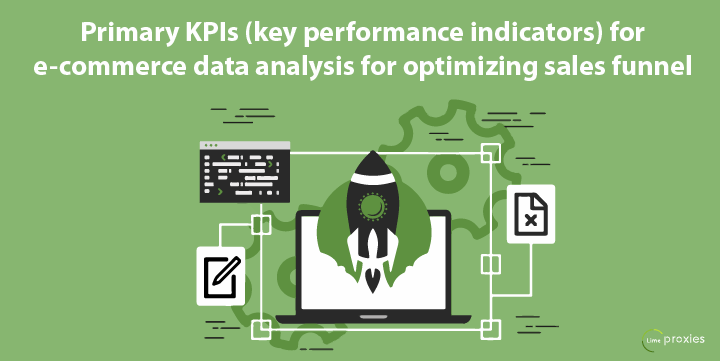
There are many KPIs available, but following all of them will lead us nowhere. We should keep a track of some relevant and important KPIs. Let us study the significant KPIs one by one.
1. Traffic
To indulge users in your conversion funnel, you need to make them aware of your brand. For that, you need to redirect traffic from social media, search engines, email forwards, and many other channels using advertisements or campaigns.
Closely monitor the traffic to find out the source which is helping you in getting most of the visitors as well as end buyers. So that you can invest your time and money in that particular source. For example, If you’re getting high traffic from the blog advertisement, invest more money in publishing frequent blogs related to your products.
2. Bounce rate
Bounce rate means the number of site visitors who leave your website just after visiting the very first page. If the bounce rate is very high, then you need to work on your website. You need to figure out the root cause behind the high bounce rate. Also, you need to add some more attention catching elements on your website to reduce the bounce rate.
3. Sales
Making the website attractive enough to catch many new/old visitors to your website every day is useless if you are not able to convince them to make a purchase. So, you need to keep a track of sales too which is directly indirectly our main goal.
Also, make sure that the sale is growing with time. A static sales will hinder your further development.
4. Conversion rate
There is a need to monitor the conversion rates of all the active offers, advertisement, and campaigns. This will not only help you in gaining some knowledge of what users like more but also you can organize comparatively more such offers in which users are interested. This act will guide them to your website and will also keep a hold of them.
5. Cart abandonment
One of the vital metrics that we always need to worry about is cart abandonment rate. High cart abandonment rate( buyers are adding items to cart but then they are going away without performing the checkout) indicates that there is some issue with our payment gateway or we have fewer payment options than buyers require, or our competitor has already giving more options.
You may also want to bring back those carts abandoning customers by sending them a notification, text or emails with some offers or additional discounts since they have the potential to become our brand evangelist. If you are getting a high repeat purchase rate, you are very near to create many numbers of brand evangelists, which will multiply with time and real efforts.
E-commerce mouse click data analysis
Following points should be included while analyzing data related to the mouse click performed by visitors.
Periodic report analysis
Below are the ideal times to review the reports as well as the points which are worth examining.
Tweak your checkout pages
As discussed earlier not everyone completes the journey till cart and not everyone who reaches cart performs the final checkout. It will be a great loss for you if they face issues while making the payment.
You should keep the payment system really very secure and not only that, the payment portal should be visibly secure too. It can be achieved using trust badges and some security-related animations. Also, do not add any additional charge at the end (buyers don’t like it).
Let’s dive in deeper to the crux of our article step by step, stage by stage.
1. Brand awareness analysis
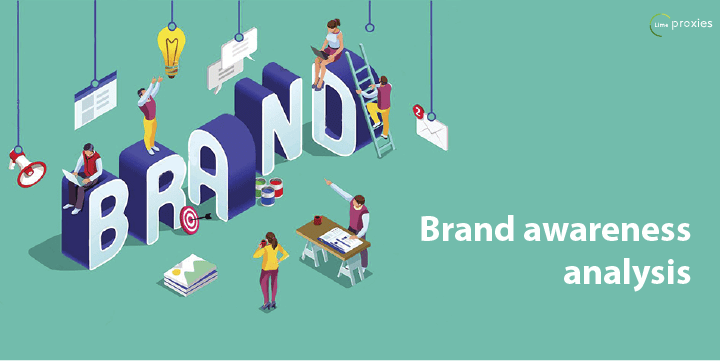
Many people think that brand awareness is not important. But brand awareness is very vital for any e-commerce website. You don’t believe it? Which brand will you suggest me if I want to buy a smartphone? The particular brand, which just crossed your mind is your favorite brand for smartphones, and you were able to recall it because you know it by its name, to be more specific you know it by its brand and above scenario explains why brand awareness is important.
In a survey, internet users were asked: “On what basis you decide which link to click from the list of available e-commerce websites link when you search for a product on the internet?” As an outcome of the survey, it was found that 70% of the users chose “Known retailer” as the main factor for choosing an e-commerce websites link to follow.
To organize brand awareness for your product, you need to showcase informative as well as eye-catching content related to your brand. Content like blog posts, post on facebook, post on Instagram, webinars, and guides.
At this stage, you try to pull up likely buyers to your website using various techniques like driving organic traffic( Visitors who randomly find your website via search engines like Google or Bing), paid promotions, and through paid campaigns, etc.
A good way is to tell them about your product before you start focusing on selling your product. Most of the customers acquire information about a company through articles rather than advertisements. Creating a blog to drive traffic to your e-commerce website will be a good approach. You can also achieve this with the help of already established famous blogs that has a good name in the market by paying them to post about your product on their blog.
Most of the buyers are very much brand specific. They are not even a little bothered about ratings, discounts, and other attractions like refunds, replacements or free shipping. For most of the time, they hit on brands they recognize.
Following the normal human tendency, people get attracted towards things(brands here) they are frequently exposed to. And this is why you should keep remarketing your product at periodic intervals. This will definitely help you in getting sales for your e-commerce website.
We can categorize awareness into three sections:
Brand awareness holds the top position of the funnel. All the stages in sales funnel revolves around the following questions:
E-commerce data analysis plays a great role in getting answers to the above-discussed questions. The relevant KPIs (key performance indicators) we need to concentrate on are as follows:
Impressions and click-through rate (CTR) can give you a count of new users who came to know about your brand. It will also give an insight into what kind of name your brand has in the market.
You may also want to include micro-conversions in brand awareness analysis. As the name suggests micro-conversions are the small KPIs, but at the same time they yield a great result. Following is the list of some common micro-conversions:-
It is a good practice to carry out e-commerce data analysis for each channel engaged with your e-commerce website in order to learn how efficiently each channel is when it comes to creating brand awareness and how exactly visitors interact with your website via every channel. The results can be surprising sometimes, for example, you may find out that the users from Instagram(active campaign) are not purchasing very often. But random users who landed on your website looking for a particular product may buy it straight away.
Brand awareness can actually generate concrete results for businesses of all sizes.
2. Conversion e-commerce data analysis.
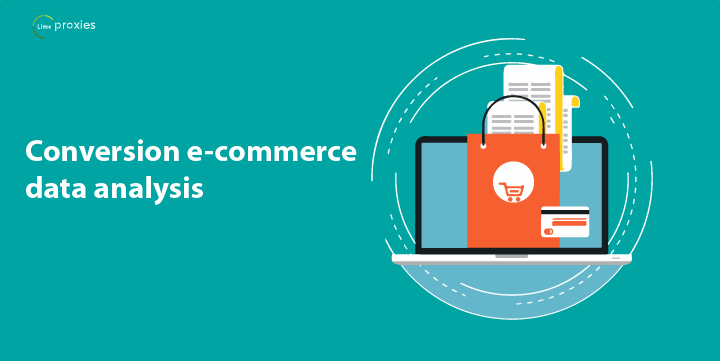
A conversion e-commerce data analysis is performed in the second most stage of our sales optimization funnel. Its main goal is to figure out all the occurrences and related actions on your e-commerce website that lead to a visitor to buyer conversion.
Following questions needs to be included in conversion e-commerce data analysis.
As we did in the first analyzing stage (brand awareness stage), we need to conduct the channel analysis again in the second stage too, but this time with a different approach. In this stage, not only new users but, all type of users from mere site visitors to buyers will be included as a part of channel analysis.
The important KPIs (key performance indicators) we need to examine in this stage are as follows:
Still confused? Let us understand this stage with the help of the following scenarios:
Case 1: Let us assume that the post analyzing report says that the total site visit rate is less but at the same time the purchase rate is still high. It indicates that we aren’t getting new customers, but our old customers are happy and they are actively making the purchase. Though we are getting good purchase rate, we can not rely on it. There is a need to work on our first two stages, Which are brand awareness and conversion stage.
Case 2: Let us assume that the post analyzing report says that the total site visit rate is high but at the same time the purchase rate is still low. It indicates that we are getting new visitors at a good rate, but they are not getting converted into a buyer. In this case, there is a need to work on the conversion stage.
Case 3: Let us assume that the total site visit rate is high, the conversion rate is also high, but, the purchase rate is very low. It indicates that we are getting new visitors at a good rate and they are also passing the conversion stage, but they aren’t purchasing much, which suggests that there is some issue with our payment page. In this case, there is a need to work on the payment page as well as our payment methods.
You can also make use of filters to investigate the cases in details on the channel basis.
It is a fact that if the visitors are returning again and again on your e-commerce website, it is easy to slide them through the conversion funnel and they have that strong potential to be your brand advocates. You can also analyze micro-conversions like moved to wishlist, added to cart, reached checkout, performed checkout and abandoned checkout.
Also, there is a need to filter out traffic which has the potential to get transformed, to obtain a more realistic conversion analysis. This process is important because not everyone that visits your website can be transformed into a buyer. It’s possible that they accidentally landed on your website, some might not be interested in your product. To filter out the genuine traffic we need to discard other useless traffic. We can achieve this by using some tactics. For example: discard traffic from your website related to visitors that spent less time, let say less than ten seconds on your e-commerce website.
3. Brand advocates reliable data analysis.
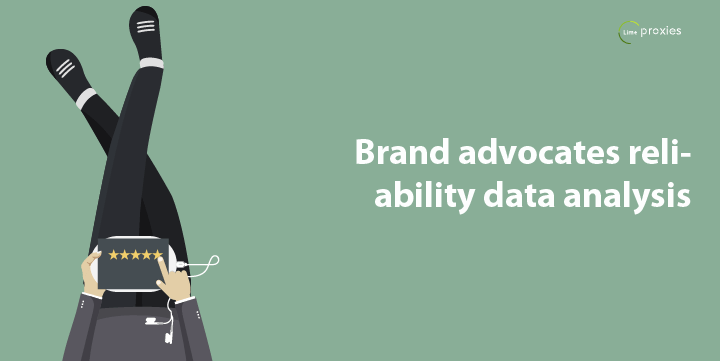
It is much easier as well as economical to serve an existing customer than getting a new one. Selling products to a new customer is much difficult than selling the same to existing one. As the existing customer has already passed through our conversion funnel with a positive result.
It doesn’t mean that we should not work toward getting new leads, a brand advocate now was a mere visitor then. The point is we should work more in the direction of maintaining the existing customers by giving them more offers or by using suitable sales tactics. And at the same time not ignoring the process of generating new leads. Transforming site visitors into brand preachers should always be in our top priority list.
Following questions should be included in brand advocates reliability analysis:-
The important KPIs (key performance indicators) we need to examine in this stage are as follows.
You should implement a survey system, which can take the product feedback as well website look and feel feedback from the buyers at the end of every purchase. These customers feedback will give you an idea about customer satisfaction related to your product as well as your website. Once you have their likes and dislikes, you need to work accordingly.
E-commerce data analysis will only tell you what happened, no matter how strongly, how deeply you perform the e-commerce data analysis, it will never tell you why something happened. Only the visitors and the buyers have the answer to your question that why something happened, so it will be a great approach to let them answers through reviews and surveys.
Conclusion
In this article, we walked through the journey of a mere visitor, like how they land on our website, how they start liking or disliking our products as well as look and feel of the website, what it takes to make them purchase our product. We understood all the points by comparing it to a funnel-like structure, and this is how exactly it works. KPIs played a great role in the whole procedure. We went through different stages with the help of different KPIs suitable for particular stages. Doing e-commerce data analysis at every stage made it possible to convert mere site visitors to brand preachers. It also proves that it is better to move with a plan than just going along with random ideas.
But, the journey was neither straight nor very simple. Using e-commerce data analysis we understood which factors, channels, and plans actually worked.
E-commerce data analysis is not a one time or one day work. It needs to be carried out until you decide to put down your product. Keep collecting data and keep performing running data analysis for a better e-commerce sale.
Should you have any queries related to e-commerce data analysis. Write to us in the comments section below.
Post Quick Links
Jump straight to the section of the post you want to read:


About the author
Rachael Chapman
A Complete Gamer and a Tech Geek. Brings out all her thoughts and Love in Writing Techie Blogs.
Related Articles
The Role of Clean Data Sets in AI and ML to Drive Meaningful ROI
Data has become an important part of businesses as many decisions bank on collected and analyzed data. Learn Here More on The Role of Clean Data Sets in AI and ML to Drive Meaningful ROI.
Which is the Best Proxy for Scrapebox?
Scrapebox is recently noticed to be the best online search engine scraping tool available, A lot of data analysts use Scrapebox as it is a most versatile tool in scraping data from almost all the search engines online.